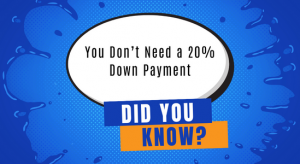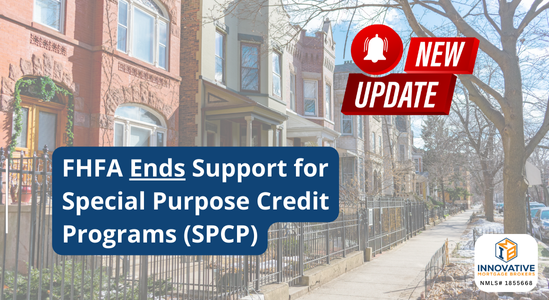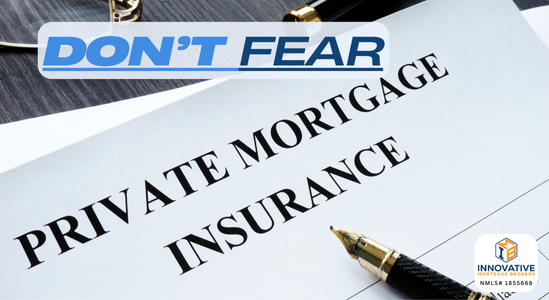FHFA Opens Door to Cryptocurrency in Mortgage Risk Assessments: What It Means for Borrowers and…
You Don’t Need a 20% Down Payment
You’ve likely heard that buying a home requires a 20% down payment. But that’s not always the case; actually, it’s rarely the case.
Is a 20% down payment nice?
Absolutely.
But can you buy a home without 20% down?
Most people can but don’t realize it.
Here’s everything you must know.
The 20% Down Payment Myth
There isn’t a rule that you MUST put down 20% on a home, or you can’t get approved. But, of course, lenders like it when you put down 20% because it lowers their risk. The more money you have invested in your home, the less likely you will default on the loan.
However, if you don’t have 20% or don’t want to invest all your free capital into your home, you can potentially secure conventional financing without it.
What Does a 20% Down Payment Do?
When you put down 20% or more on a home, you lower your risk of default. In addition, lenders don’t require Private Mortgage Insurance (PMI).
Now, you may still get approved if you can’t put down 20%; it depends on your qualifying factors. The difference is you’ll pay PMI monthly until you owe less than 80% of the home’s value.
How much PMI you pay depends on your loan amount and credit score. Like any insurance product, it’s based on risk. The insurance protects the lender from default. If you stop making your payments, the lender will start a claim on the insurance and get some of their money back. So the more likely you are to stop making payments, the higher insurance premiums you’ll pay.
What’s the Minimum Down Payment?
So if lenders don’t require a 20% down payment, how much do they require?
It depends on your circumstances.
First-Time Homebuyers
If you’ve never bought a house or haven’t been a homeowner for the last three years, you’re a first-time homebuyer and get special treatment. Many conventional lenders will allow a down payment as low as 3% for first-time buyers.
Let’s look at how that differs from 20%.
Say you buy a home for $200,000. A 20% down payment would be $40,000, and a 3% down payment would be $6,000. That’s quite a difference. You’d likely be able to buy a home much sooner if you only need $6,000 versus $40,000.
Subsequent Homebuyers
Lenders want a slightly higher down payment if you’ve owned a home before, but it’s not drastic. Most lenders allow a down payment of only 5% for subsequent homebuyers.
Looking at the same $200,000 home, you’d need $10,000 down instead of $6,000. But if you’re selling a home, you may have proceeds to put down on the new home.
The Pros and Cons of a 20% Down Payment
As you determine how much to put down on a home, consider these pros and cons.
Pros:
- A lower monthly payment – The more money you invest upfront in your home, the less you must borrow. The less you borrow, the lower your monthly payment will be. Investing money upfront may be beneficial if you’re worried about your payment, especially with higher interest rates.
- You may get a lower rate – Lenders base interest rates on your risk of default. The more you borrow, the higher your risk of default becomes. If you invest 20%, your risk of default drops drastically and may allow lenders to offer a lower interest rate.
- No PMI – The largest benefit for most people when making a 20% down payment is the lack of PMI. Not paying PMI means you save money monthly and over the life of the loan.
Cons:
- Takes longer to save – Saving a 20% down payment can take a long time and delay homeownership. You’ll also need money for closing costs and moving into a new home.
- Ties up your capital – Money invested in a home isn’t liquid, or at least immediately liquid. It can take months or longer to sell a home, and you don’t know how much you’ll sell it for, so you could risk a lot of your capital for a 20% down payment.
- Fewer emergency funds – If you use all your money for the down payment, you may not have money set aside for emergencies. If you, your car, or your house has an emergency, it could cause financial distress.
How to Determine How Much to Put Down
So how do you determine if a 20% down payment is right? Here are some questions to ask yourself.
- Do I have other money saved?
If you’re using all your capital for a down payment, reconsider it. Think about emergencies and saving for other important things like retirement. Putting some money down on the home is a good option, but depleting your savings isn’t.
- Do I want the lowest payment possible?
If the monthly payment is your largest concern, a larger down payment may be ideal. However, you can keep your payment down and possibly qualify for a lower interest rate if your other qualifying factors allow it.
- How long will I stay in the home?
Think about your plans. Is this a long or short-term purchase? If this is your ‘forever home,’ a larger down payment may make sense to get the lower interest rate. On the other hand, if you only plan to live there for a few years, tying up your capital may not make sense.
- Do I have money saved for retirement and other goals?
Are you maxing out your retirement contributions annually? Have you saved money for other shorter-term goals? Make sure you look at the big financial picture before investing all your money into one investment (your home).
Final Thoughts
A 20% down payment isn’t required, and you might even get approved by putting down as little as 3%. Figure out how much you’re comfortable investing in your home and keeping tied up for the long term before buying a home.
Whether it’s 3% – 5% or 20%, many loan programs are available, including conventional loans.





